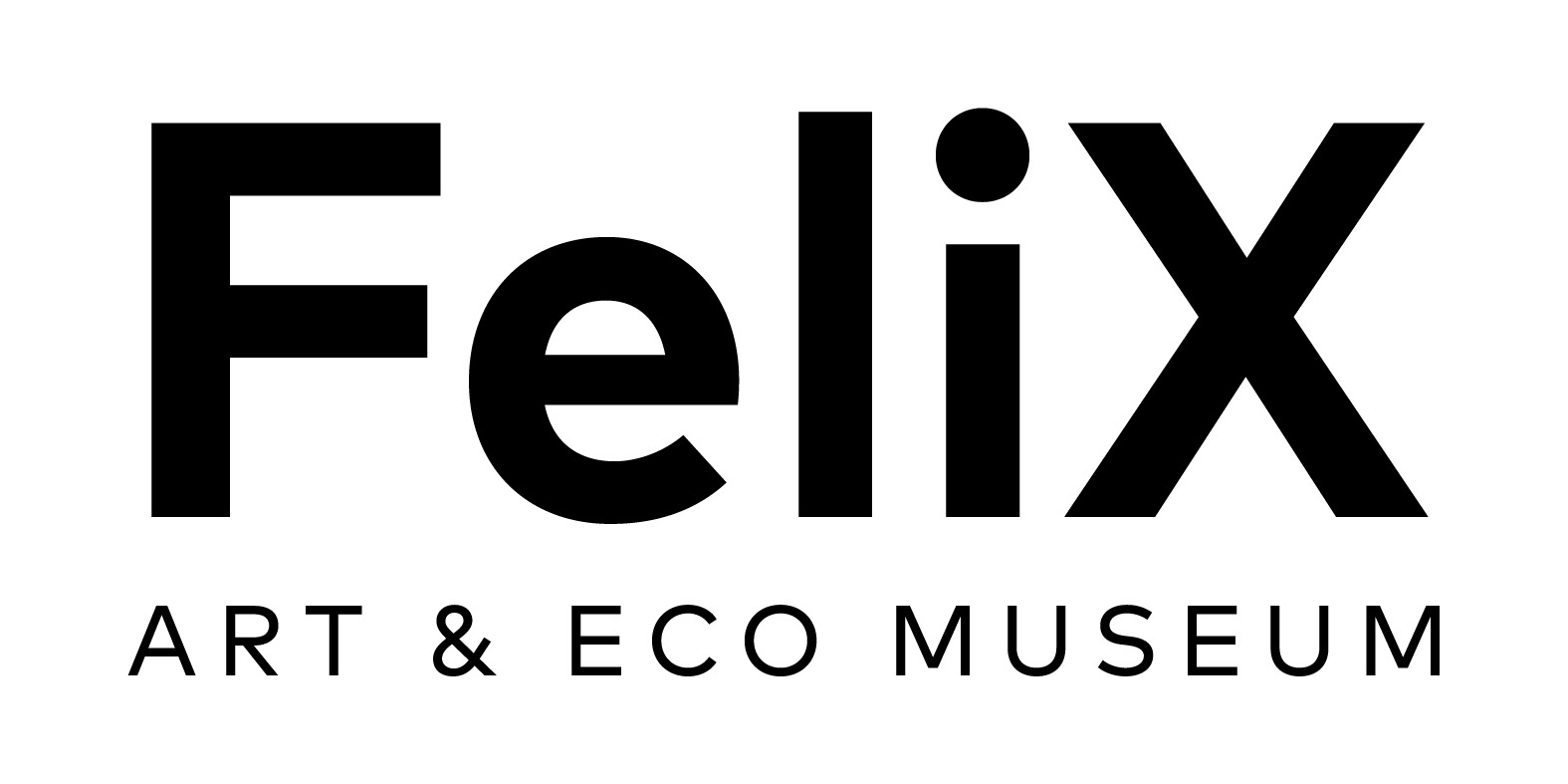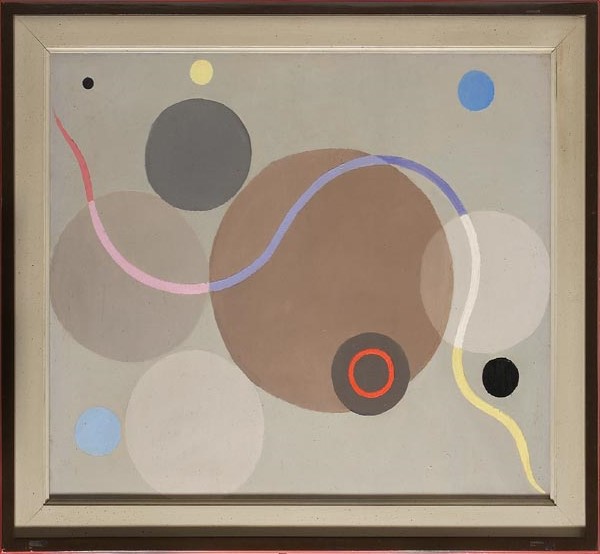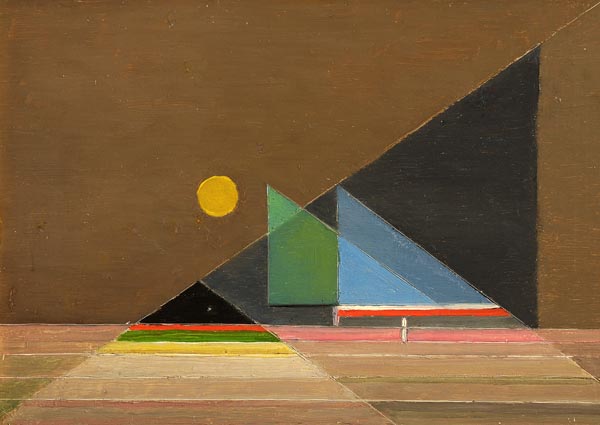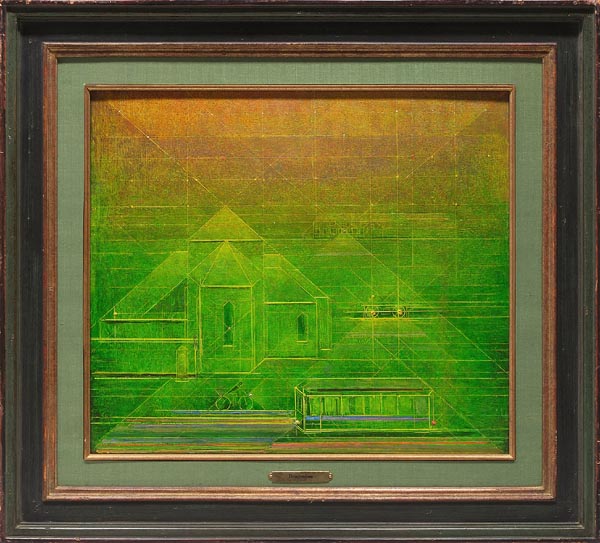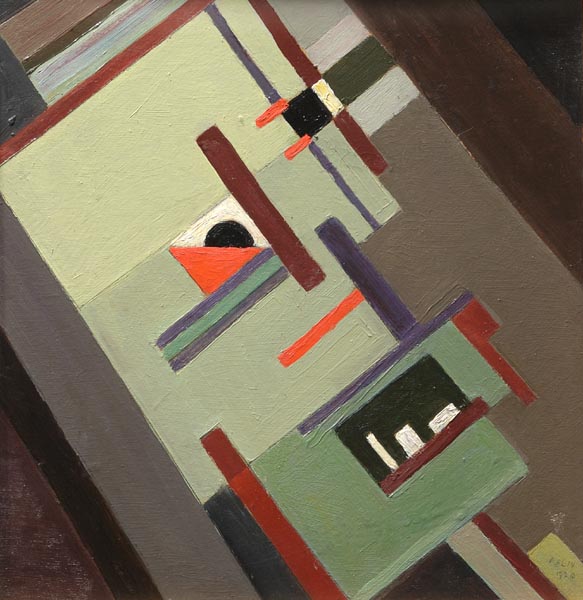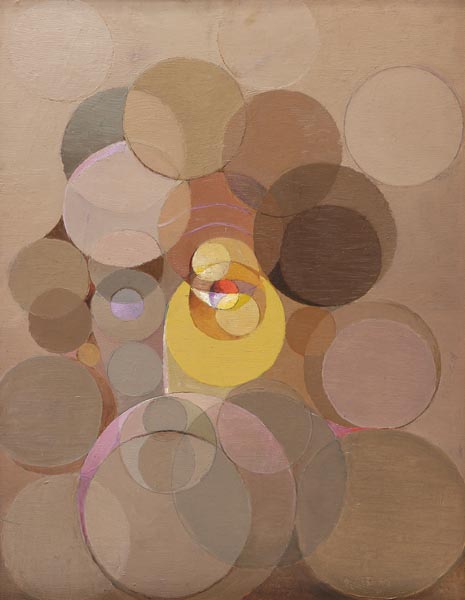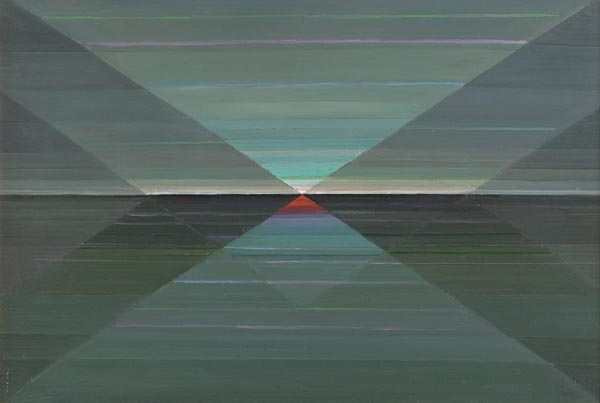Repetition and reuse in the oeuvre of Felix De Boeck
until 28.01.2024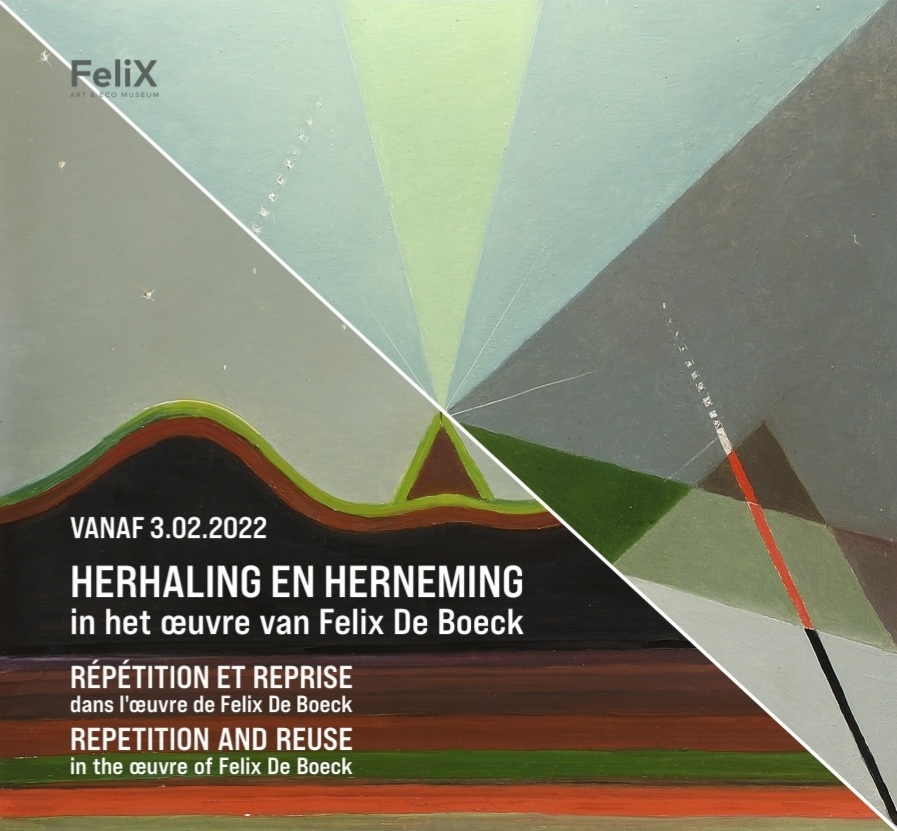
Repetition and reuse
Felix De Boeck’s ambition was clear from an early age: to be an ‘oeuvre’ painter, of a coherent set of paintings that can only be understood as part of a larger whole.
At first glance, however, the oeuvre he left is far from homogeneous and it is difficult to find a common thread. The development of his work is not linear but rather a repetition of themes. Themes, compositions, forms and colours keep returning, though in a different style.
Throughout the years, his work navigates between abstraction and figuration, experimentation and revival of old themes. His artistic path reveals itself as a constant search for balance between geometry, colours and content.
Circle
Sun
Abstract landscapes
Fluo
Death masks
Self-portraits
Diagonals
Circle
The circle is a recurring form in the oeuvre of Felix De Boeck. Initially used formally for new plastic experiments in the 1920s, in time the circle will over the years take on a symbolic dimension: a symbol of the cycle of life, from birth to death.
Sun
The motif of the sun can be found in the entire oeuvre of Felix De Boeck. The sun as a source of light which spreads and structures his paintings. At first painted naturalistic, whereby the sunlight floods the painting. Then, the sun is reduced to a circle, with a religious and metaphysical dimension: the sun is the idea of God, source of life and light. Finally, he reduces the sun to its essence: a simple point, a mystical pictogram.
Abstract landscapes
The abstract landscapes are a particularly interesting series of paintings, which illustrate the artist’s constant search for balance between figuration and abstraction, geometry and colour. The 1960s saw a renewed interest in abstraction thanks to a new generation of artists. From then on, Felix De Boeck painted abstract landscapes by revisiting drawings and compositions from the 1920s, thus seeking to gain recognition for a forgotten period.
Fluo
At the end of the 1950s, the artist found himself in a deadlock. In his quest for renewal he briefly experimented with fluorescent paint, provided by the befriended composer Louis De Meester.
Death masks
Death is a theme that haunts the life and work of Felix De Boeck. Personal loss is expressed in this series of death masks that he made from the 1920s to the 1940s. The theme of illness and death gives space to the human figure in Felix’s work after the First World War. Later, the artist goes through a period in which he mourns the death of his parents, his brother and four of his five children. In the paintings, in which he incorporates the theme of death, he sublimates his grief.
Self-portraits
Felix De Boeck did portraits of a lot of people. Fans, villagers, prominent people, but also himself. In the exhibition we show a series of self-portraits, which not only reflect the personal life of a remarkable person, but also his stylistic evolution.
Diagonals
Felix De Boeck abandoned rather quickly pure abstraction in favour of geometric figuration. However, the experiments of this period formed the basis of his personal ‘plastic grammar’ which make his works unique. Diagonals, for example, an essential part of his visual language: two lines that cross the canvas and intersect in the middle form the structure of the composition. In his ‘diagonal’ compositions, Felix achieves a subtle balance between line and colour.
 Boek Tickets
Boek Tickets
